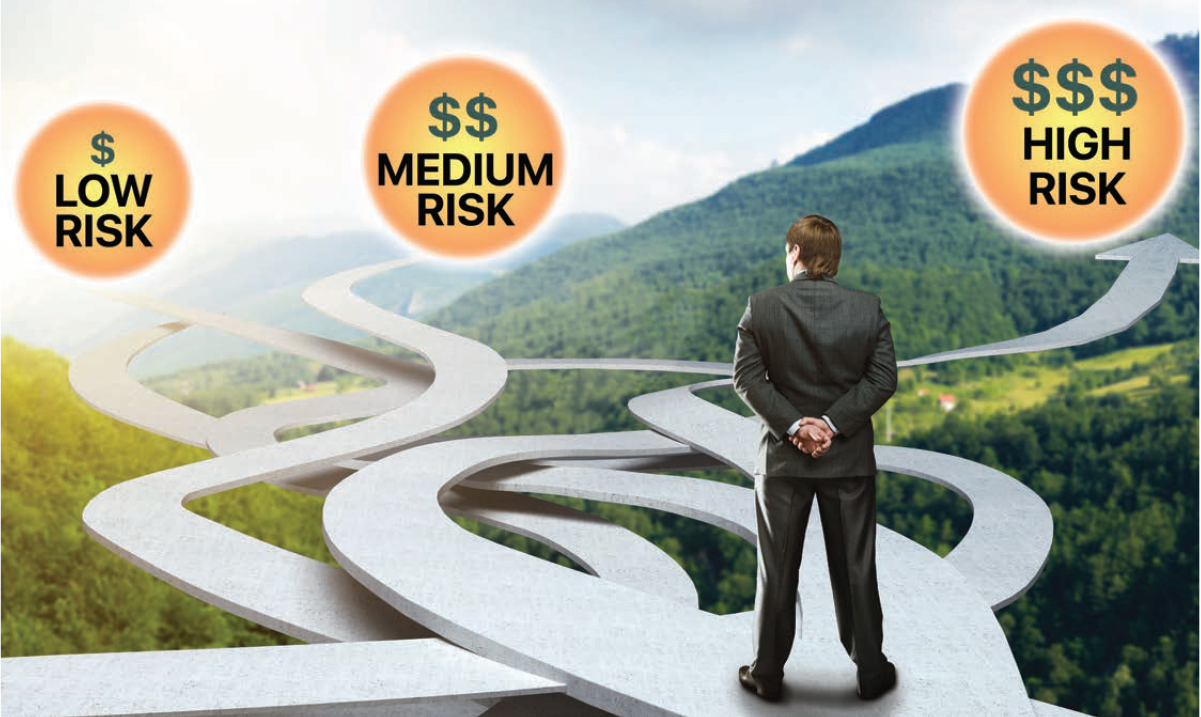3 Common Risk Tolerances: Where Do You Fall?

Everything in life has risks. For example, when you go to an interview, you risk not getting the job. When you ask someone on a date, you risk rejection. Exploring a new business venture brings the risk of failure. When it comes to investing, risk is not a “one size fits all”. Just because you may consider yourself a risk-taker, your financial future may not be an area where you want to gamble.
The best way to find your true investment risk tolerance is to assess your situation, so let’s take a look at the types of risk tolerance and how they guide your decision-making process.
First, what is risk tolerance? “Risk tolerance” represents the variability an investor is willing and able to take in their portfolio. The answer drives how you should invest.
Your risk tolerance is highly personal and is likely influenced by several key inputs:
- Age: When you’re young, you may be willing to shoulder more risk because you have more time to ride out any volatile market “waves”. Retirees may want to be more conservative.
- Goals: Calculate how much you need to reach your financial goals. Then, find an investment strategy that has potential to produce the needed returns to attain the goal.
- Timeline: How soon will you need your money? What could cause you to need it sooner than expected?
- Comfort level. How does stock market volatility make you feel?
Simplistically, risk tolerance can be: low, medium or high.
Those with a low risk tolerance tend to have a conservative investment strategy. They shy away from stock market volatility and favor investments with predictable yields. An example of a conservative portfolio might be 20 percent stocks and 80 percent bonds. Historically speaking, you might expect an average return of around 6.1 percent, or a bit less than 3 percent after inflation. A $100,000 investment is worth $234,284 after 30 years in this portfolio.
Investors with a medium risk tolerance may split their money into 50 percent large-company stock mutual funds and 50 percent bonds. Such a balanced portfolio historically has returned 8.2 percent, or about 5 percent after inflation. $100,000 would be worth $429,731 after 30 years.
Finally, investors with a higher risk tolerance tend to be more aggressive and hopefully remain steady through inevitable swings in the market. An aggressive portfolio for this type of investor may be 80 percent stocks and 20 percent bonds, returning on average 9.4 percent, or about 6 percent after inflation. $100,000 in an aggressive portfolio would be worth $604,340 after 30 years.
Important as well, though, is to determine what can change your risk tolerance. Merely walking through life can call for changes to investment philosophy and risk tolerance for most of us. For example, marriage and combining finances can be tricky. You and your spouse may likely have different financial goals as a married couple than you did when you were single. Does one of you have a higher risk tolerance than the other? Do you plan to start a family or build a home?
When buying a home, how you invest your down payment money depends on when you plan to buy. For a purchase in three years, you may need to be more conservative than you would if you were buying in ten years. Determining this timeline is the first step to figuring out your risk tolerance with those savings.
When you have a baby, it may be important to increase your cash reserves, buy a bigger life insurance policy and start a college fund. Start with a discussion with your financial advisor surrounding what your goals are for your family.
When your kids are grown, your income is likely at its highest, and your expenses may be lower than they were with children on the payroll. In this phase of life, focus on maxing out your retirement account contributions each year and saving as much as you can each month.
Approaching retirement, around age 50-55, can be a good time to see if you’re on track for your retirement goals. If you’re way off the mark, consider what changes you need to make to get on track. Again, discussion around your objectives is the first step.

Jessica Banitt, CPA, CFP®
Wealth Advisor
Linscomb & Williams
Linscomb & Williams is a Houston based wealth management firm established in 1971.














